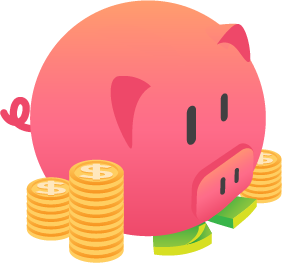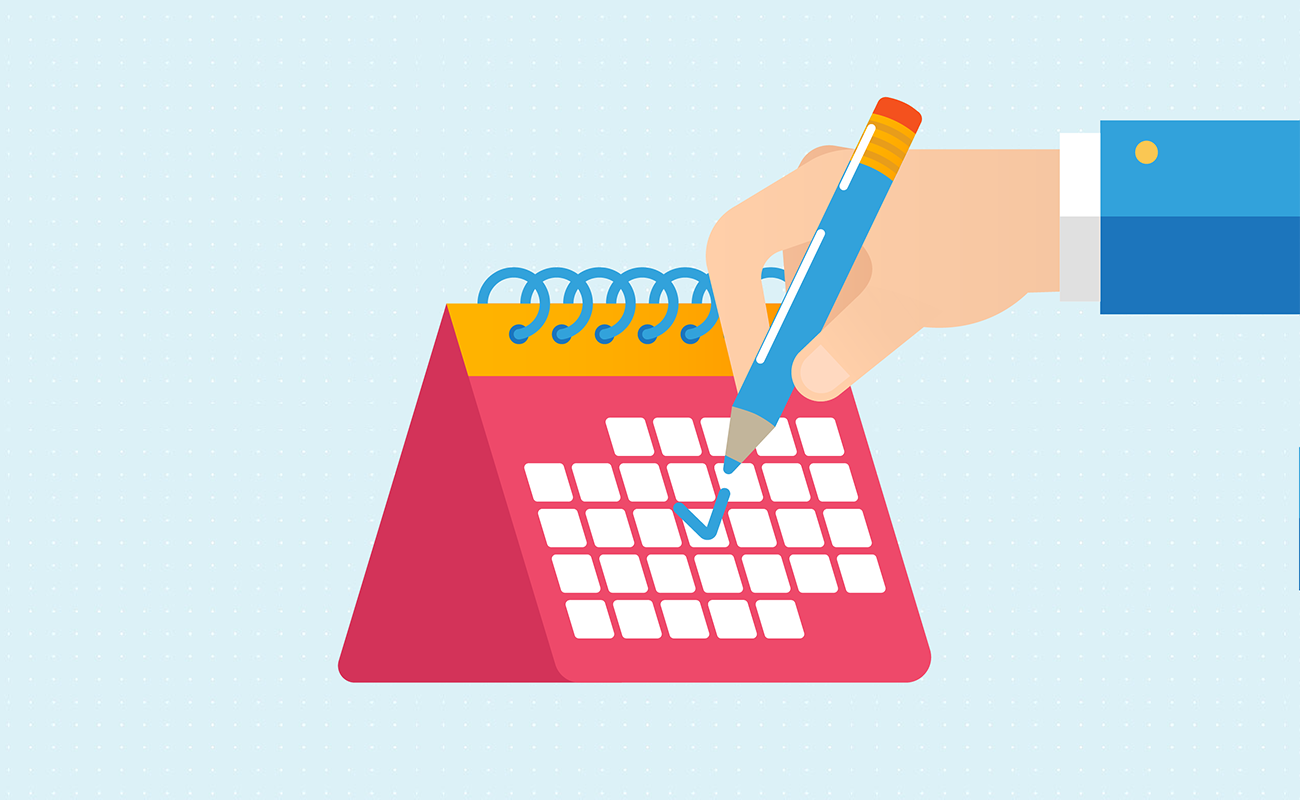Amortization
Biweekly Payments
Interest Only Payments
 Basic Loan Payment Calculator
Basic Loan Payment CalculatorUse this calculator to figure out the regularly scheduled fixed-rate loan payments on an amortizing loan. Enter the purchase price, any down payment, the interest rate on the loan, the payment frequency & the loan's term.
Results immediately update automatically whenever inputs are changed.
Guide published by Jose Abuyuan on January 24, 2020
For many people, taking a loan is a key step in obtaining major life purchases. It requires doing your research, getting your finances in order, and committing to timely payments. However, even with sufficient income, some consumers still have a hard time managing their loans.
Struggling with loans is a confluence of many factors. Some of these include very high interest rates or extended loan terms. For others, it could be a matter of sorting out their finances to ensure timely loan payments.
Whether you’re looking for a mortgage or car loan, it’s crucial to understand the true cost of borrowing money. In this guide, we’ll walk you through important characteristics of amortized loans. And to help you manage your payment schedule, we’ll show you how loan amortization works.

Amortization involves distributing payments over a set amount of time. In accounting, it is referred to as a bookkeeping technique used to sequentially decrease the value of a loan or intangible asset.
Amortization pertains to two types of process. The first is loan amortization, which reduces a balance with fixed payments over a period of time. The second type, asset amortization, focuses on computing measured costs over the life of an intangible asset.
For our topic, we’ll concentrate on loan amortization, which is a common aspect of mortgages, auto loans, and personal loans. This payment schedule is employed when consumers pay off debt with fixed payments in an installment basis. It also comes with a set end date. Amortization calculates how much of your monthly payments goes toward your interest and principal (balance).
What’s the tricky part with amortization? It does not readily show the total interest cost of a loan. For this reason, it’s crucial to calculate the amortization schedule for the entire duration of your payments.
What is negative amortization? Amortization generally spreads payments to cover interest costs. However, if your payment is not enough to pay down the accrued interest, negative amortization happens. Ultimately, this can increase your balance, warns the Consumer Financial Protection Bureau (CFPB).
However, amortization works in your favor by imposing fixed monthly payments. This way, you won’t have problems sudden increase in amounts. It also helps you anticipate payments to streamline your budget.

Amortization does not apply to credit card debt. Bankcards do not impose fixed payments. As long as you do not go below the minimum, creditors allow you to pay any amount. This is also why many consumers easily get into credit card debt.
Loans have three main variables that determine your fixed monthly payment. These variables include the following:
To calculate your loan’s fixed monthly payment and total interest cost, use our calculator.
Think of the loan amount or principal as the entire amount you’re borrowing. If you’re looking for a lender, it’s usually one of the first loan components you need to figure out. Do you need to borrow $16,000 to purchase a used vehicle? If you’re looking for a house, is a $150,000 loan enough? Ask yourself these types of questions.
Next, the interest rate is the amount your lender charges to secure your loan. The longer you don’t pay down your balance, the more it generates interest cost. Loans taken by high credit score borrowers typically have lower rates. This is because they are regarded as low-risk debtors. Remember this so you can further improve your credit score before applying for a loan.
The loan term is the agreed payment time you arranged with your lender. For personal loans, terms usually last for three years. Car loans, on the other hand, typically have 5-year terms. However, auto review site Edmunds.com states that more buyers are now choosing longer 6-year terms. For mortgages, since houses have the largest cost, homebuyers can choose between 15 or 30-year terms.
How about the down payment? This is upfront cost you pay at the start of the loan. Add this to your total loan payments later on to estimate the overall cost of your loan. Knowing this will help you decide whether you’re getting a deal you can afford.
Once you have all three variables in place, you can start calculating your monthly payment. Here’s the formula below:
Monthly Loan Payment = Amount / Discount Factor
Loan Payment = A / D
You’ll need to calculate the following factors:
To give you an idea how it’s done, see the example below. Let’s suppose the car’s price is $36,500 and you made a down payment of $3,500. Your loan details are as follows:
Loan Amount: $33,000
Interest: 12.5%
Payment term: 5 years (60 months)
Monthly Payment = A / D
33,000 / {[(1 + r) ^n] – 1} / [r(1 + r)^n]
r = 0.125 / 12
r = 0.0104
n = 12 x 5
n = 60
D = {[(1 + 0.01041)^60] – 1} / [0.01041(1 + 0.01041)^60]
D = 44.4486
Monthly Payment
= 33,000 / 44.4486
Monthly Payment = 742.43
In this example, the payment is $742.43 each month.
If you use our calculator above, it will include the total interest cost, total loan payments, and overall cost of your loan. Again, these details are important so you know the actual amount you need to cover your loan.

But how do you know how much of your payment goes toward the principal and interest? If you’re wondering how banks break down loan payments, it entails creating an amortization schedule. This includes the following components:
The amortization schedule breaks down the interest and principal amount that goes with each of your payments. It repeats basic calculations until your loan balance is reduced to zero. Here’s how you can calculate your amortization schedule:
Calculate the interest payment – Get your interest rate and multiply it by your loan balance. Divide the product by 12.
Find the principal payment – Take your monthly payment and subtract the interest payment. The difference is the amount applied to your principal.
Know your current loan balance – Subtract the latest principal payment from the loan balance. The difference is the current balance.
Below is an example of a payment schedule which details how much goes toward your interest and principle. The table is based on the first car loan example. It includes the first five payments and the last five payments for comparison.
Car Loan Amortization Schedule
Loan balance: $33,000
Monthly payment: $742.43
Interest rate: 12.5%
| Month / Year | Payment No. | Starting Balance | Interest Paid | Principal Paid | Ending Balance |
|---|---|---|---|---|---|
| Feb 2020 | 1 | $33,000 | $343.75 | $398.68 | $32,601.32 |
| March 2020 | 2 | $32,601.32 | $339.60 | $402.83 | $32,198.49 |
| April 2020 | 3 | $32,198.49 | $335.40 | $407.03 | $31,791.46 |
| May 2020 | 4 | $31,791.46 | $331.16 | $411.27 | $31,380.19 |
| Jun 2020 | 5 | $31,380.19 | $326.88 | $415.55 | $30,964.64 |
| *** | *** | *** | *** | *** | *** |
| Sept 2024 | 56 | $3,599.10 | $37.49 | $704.94 | $2,894.16 |
| Oct 2024 | 57 | $2,894.16 | $30.15 | $712.28 | $2,181.88 |
| Nov 2024 | 58 | $2,181.88 | $22.73 | $719.70 | $1,462.18 |
| Dec 2024 | 59 | $1,462.18 | $15.23 | $727.20 | $734.98 |
| Jan 2025 | 60 | $734.98 | $7.66 | $734.98 | $0 |
Explanation: The interest payment started at $343.75. This decreased by around $4 every month during the first 5 payments. As the interest payment gradually decreased, the principal payment also increased. As seen in the table, the principal payment which began at $398.68, increased by $4 every month.
At the beginning of your loan, more of your payment goes toward the interest. But as you make more payments over the years, a bigger portion of your money goes toward the principal during the latter years.

When you review your amortization schedule, you’ll have a better sense of how much money you need to prepare to cover your loan. It allows you to compare interest rates and terms. And if you use our calculator, you’ll easily see how much you’re spending on interest. This helps you make more informed decisions so you can avoid deals that you can’t afford.

Borrowers also use this payment schedule to calculate how much they can save if they increase their fixed payments. This helps them pay off their debt faster.
Knowing the basic elements of your loan is important in making timely payments. It will help restructure your finances so you can prioritize setting aside income toward your debt. At the end of the day, every penny you spend should be worth the cost.
Learn the great benefits of paying your debts faster by visiting this page.
Jose Abuyuan is a web content writer, fictionist, and digital artist hailing from Las Piñas City. He is a graduate of Communication and Media Studies at San Beda College Alabang, who took his internship in the weekly news magazine the Philippines Graphic. He has authored works professionally for over a decade.